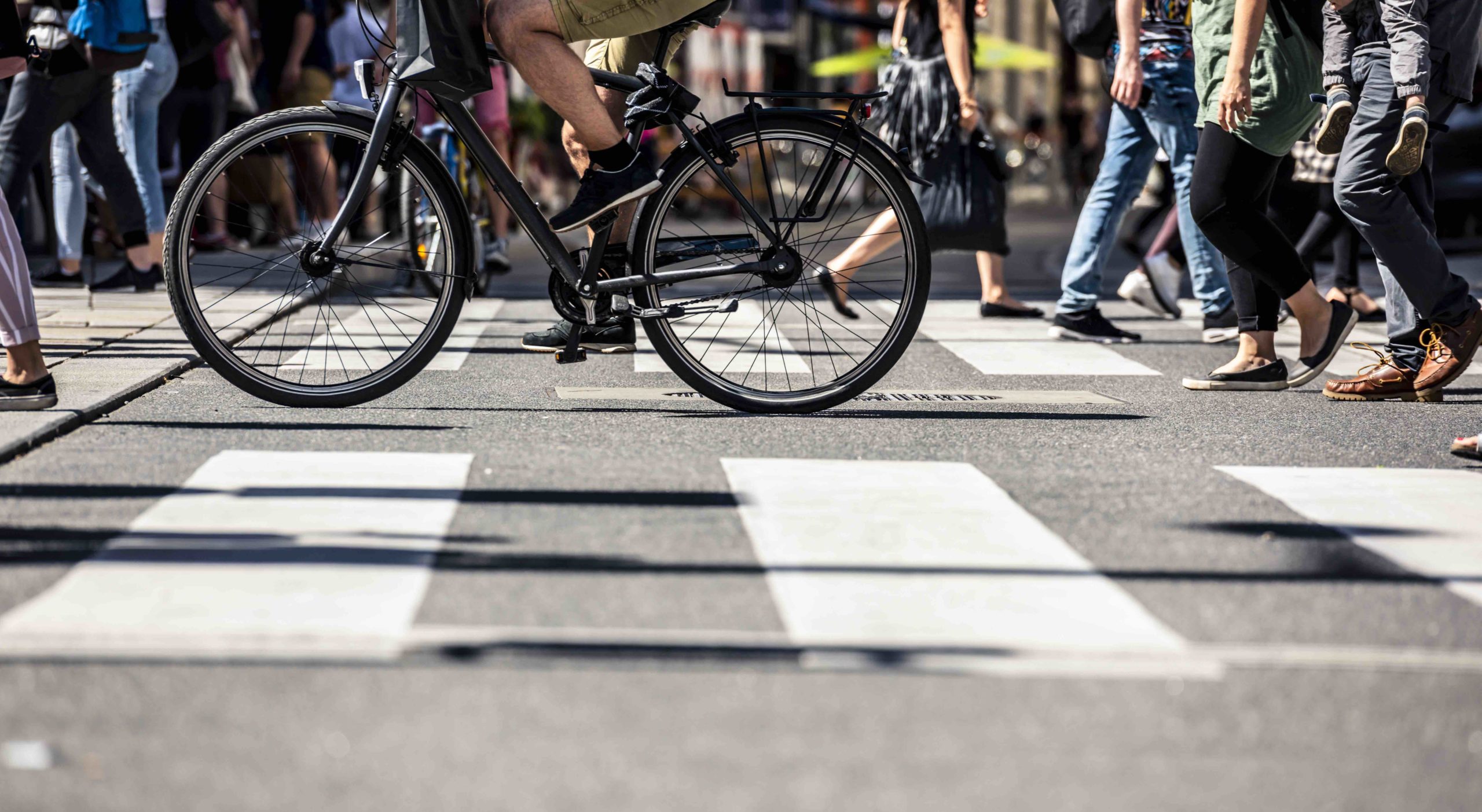March 18, 2020

Getting around any city like Norwalk by bicycle or walking can be challenging as the vast majority of people travel by car. In 2017, the Norwalk Bike/Walk Commission was established to support bicycling and walking as safe, accessible and sustainable forms of transportation and recreation. Norwalk’s 10-year Citywide Plan envisions making city streets safer by implementing policies that provide safe transit for all moving vehicles as well as pedestrians (Read more here), such as investment in new bicycle and walking facilities distributed equally throughout the city. As Norwalkers gear up for more biking and walking, the Bike/Walk Commission shares some tips for safely getting around the city on a bike or on foot.
Safe Bicycling Guidelines
When biking around town, it’s important to remember that bicycles are vehicles. When on a bike, you need to follow the rules of the road, just like a car. This means riding with traffic, always stopping at red lights, and making a full stop at stop signs. When biking with another person, you can ride two abreast (no more than that), but need to ride single file when there is car traffic coming from behind you in order to let cars pass.
Here are some tips for staying safe on your bike:
- Wear a helmet that fits properly (this is mandatory for those under 15-years old, including infants and toddlers in a bicycle seat)
- Adjust your bicycle to fit you:
- When standing over your bicycle, there should be 1- to 2-inches between you and the top bar if using a road bike, and 3- to 4-inches if using a mountain bike
- The seat should be level from front to back
- The seat height should allow a slight bend at the knee when the leg is fully extended
- The handlebar height should be at the same level with the seat
- Make sure your tires are properly inflated and brakes work
- Ride with at least one hand on the handlebars. Don’t hold items- carry them in a bicycle carrier or backpack.
- Be on the lookout for hazards that can cause a crash such as potholes, broken glass, gravel, puddles, leaves, and dogs. If you are riding with friends and you are in the lead, yell out and point to the hazard to alert the riders behind you.
- Be visible by wearing bright clothing and using lights and reflectors at dusk and at night
Walking Safety Tips
In 2007, the Connecticut legislature stiffened the law regarding pedestrians and crosswalks requiring that drivers grant the right-of-way when a pedestrian has stepped “off the curb or into the crosswalk”. In other words, drivers must yield, slow, or stop when pedestrians are in crosswalks. When there are no crosswalks, drivers have the right of way. Despite the crosswalk law, and since there are many places around town with no crosswalks, you can’t be too cautious or careful when walking.
Here are some guidelines to keep you safe when walking in town:
- Use a sidewalk- if there is one. When on a sidewalk, you can walk with or against traffic
- Walk single file against the traffic If there is no sidewalk
- Cross streets at crosswalks, and when the signal gives you the “green light”
- Watch for cars and bicycles entering or exiting driveways or backing up in parking lots
- Be visible. Just like on a bike, it’s important that drivers can see you. Wear bright colored clothes and consider wearing a safety vest and a light at dusk or when it’s dark
- Stay tuned in to the environment around you. Don’t wear ear buds or text while walking
- Practice “defensive” walking by assuming it’s your job to stay safe. For example, establish eye contact with drivers
Walking and biking around town can be a great alternative to driving. They are not only healthier for you, they are also better for the environment. As Norwalk works to make it easier to get around town by bike or on foot, keep in mind the tips above. Stay safe!




